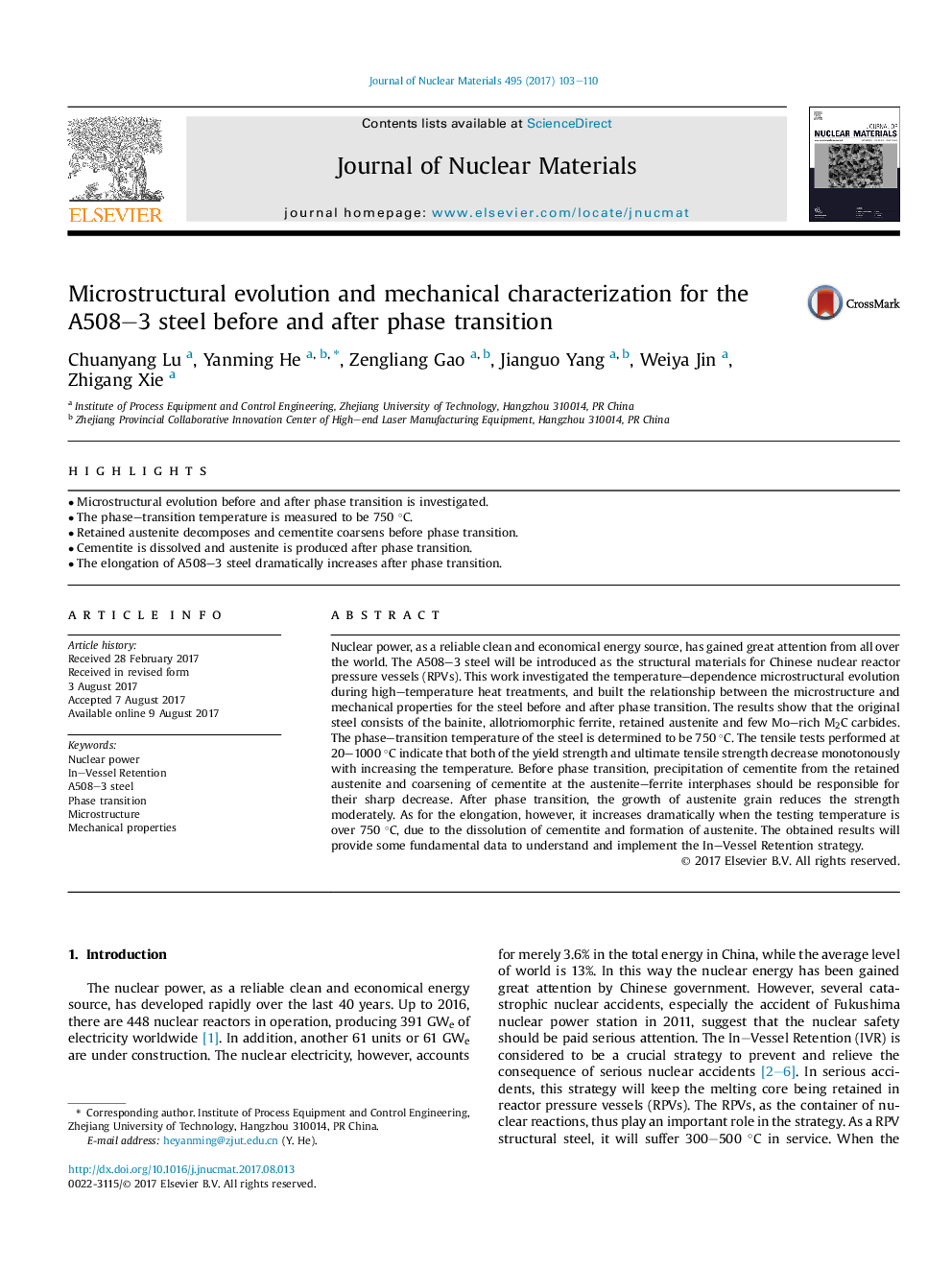| Article ID | Journal | Published Year | Pages | File Type |
|---|---|---|---|---|
| 5453837 | Journal of Nuclear Materials | 2017 | 8 Pages |
Abstract
Nuclear power, as a reliable clean and economical energy source, has gained great attention from all over the world. The A508-3 steel will be introduced as the structural materials for Chinese nuclear reactor pressure vessels (RPVs). This work investigated the temperature-dependence microstructural evolution during high-temperature heat treatments, and built the relationship between the microstructure and mechanical properties for the steel before and after phase transition. The results show that the original steel consists of the bainite, allotriomorphic ferrite, retained austenite and few Mo-rich M2C carbides. The phase-transition temperature of the steel is determined to be 750 °C. The tensile tests performed at 20-1000 °C indicate that both of the yield strength and ultimate tensile strength decrease monotonously with increasing the temperature. Before phase transition, precipitation of cementite from the retained austenite and coarsening of cementite at the austenite-ferrite interphases should be responsible for their sharp decrease. After phase transition, the growth of austenite grain reduces the strength moderately. As for the elongation, however, it increases dramatically when the testing temperature is over 750 °C, due to the dissolution of cementite and formation of austenite. The obtained results will provide some fundamental data to understand and implement the In-Vessel Retention strategy.
Related Topics
Physical Sciences and Engineering
Energy
Nuclear Energy and Engineering
Authors
Chuanyang Lu, Yanming He, Zengliang Gao, Jianguo Yang, Weiya Jin, Zhigang Xie,
